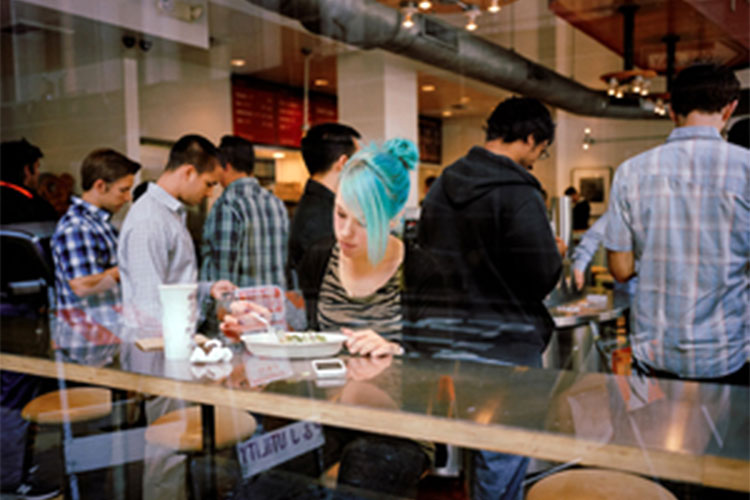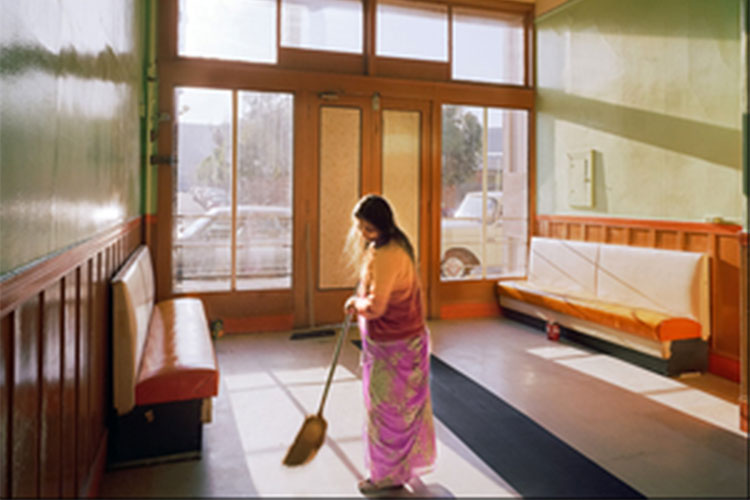Berkeley photographers share space with Dorothea Lange at Oakland Museum
A new exhibit centers on the work of the great photographer of the Great Depression, adding in recent images that plumb her themes of labor, inequality, poverty and the human spirit.

May 9, 2017
An Oakland Museum of California retrospective of Dorothea Lange’s work shares gallery space with images by three current photographers tied to UC Berkeley, who were inspired by her documentation of life in the Golden State during the Great Depression and before and after World War II.
The exhibition, “Dorothea Lange: Politics of Seeing,” runs from Saturday through Aug. 13.
According to program materials, the images by the UC Berkeley-linked photographers were selected to illustrate Lange’s continuing impact on current social and political topics such as income inequality, immigration, racism, xenophobia and homelessness.
The photographers with UC Berkeley connections are:
Ken Light, the Reva and David Logan Professor of Photography in the Graduate School of Journalism, who is sharing four of his own images of life in California’s still-struggling San Joaquin Valley.
He recently recalled arriving in the Central Valley town of Mendota with camera in hand one day in 2009, as the community reeled from a 40 percent unemployment rate caused by the Great Recession and the drought.
“The town’s Westside Community Center had become the lifeline for farmworkers, many who were making less than $16,500 a year. I arrived early to see a long line running along the side of the building, comprised of single men, families, crying babies and the elderly waiting for hours for the doors to open and free food to be distributed,” said Light.
His photos in the Oakland Museum exhibit show a food line in Mendota, and others from Kettleman City, also on the Central Valley’s west side, a community bordered by a toxic waste site and where fields have been sprayed with hazardous chemicals blamed by many for causing birth defects for at least 20 percent of the children born in the town.
Light has been drawn to documenting life in the “nation’s breadbasket,” the fertile agricultural territory that he and his wife, Melanie, made the focus of an extensive literary and photographic project, Valley of Shadows and Dreams.
Janet Delaney, a former adjunct professor in Berkeley’s College of Environmental Design, is displaying some of her photos from decades spent documenting the steady metamorphosis of her own once-modest South of Market neighborhood in San Francisco into an upscale hipster haven.
Delaney said she studied the work of Lange and Walker Evans as she began recording SoMa’s transformation in the late 1970s and early ‘80s, combining elements of both photographers to produce an elegant and compelling series about displacement.
“My project includes portraits and interviews with people who lived and worked in the neighborhood as well as images that give a sense of place. I wanted to give a voice to this area that had very little representation in city government or business,” Delaney recalled, adding that the neighborhood was so underrepresented that it could literally be bulldozed.
Delaney said Lange also used her photographs to bring attention to injustice.
“She approached her subjects with compassion and honesty,” Delaney said.” I appreciated how she was able to make beautiful photographs of difficult subjects. That beauty made you want to look and look again, until you saw the complexity of the situations she documented.”
She used the same type of cameras — a twin-lens Rolleiflex and a 4×5 — as did Lange. Each camera, she said, “is like using a unique musical instrument” rendering its own sound, or vision.
Jason Jaacks, a documentary photographer who earned the Dorothea Lange Fellowship in 2014, the year he graduated from UC Berkeley’s journalism school, for a collection of photos recording life along the border between Mexico and Arizona.
The Oakland Museum of California exhibit of more than 100 Lange images also contains another UC Berkeley connection: The Lange photos are part of a vast archive of vintage prints, negatives, field notes and personal memorabilia donated to the museum by her husband, Paul Taylor, who was a UC Berkeley economics professor focused on labor and migration.
Taylor, while serving as field research director for the Rural Rehabilitation Division of the California State Relief Administration, hired Lange to record the experiences of migrants flocking to California’s fields, orchards and farm towns in the 1930s looking for work.
The exhibit focuses on Lange’s photographic documentation of the Great Depression, the internment of Japanese Americans, World War II and postwar California. It also includes a section on Lange’s early life, an interactive space and a media room where film clips of Lange and others talking about her work will be shown.
RELATED INFORMATION
- An audio clip of an interview with Lange is available online through UC Berkeley’s Oral History Center, as is the complete written transcript.
- Explore the Oakland Museum of California’s online archive of Lange’s work.







